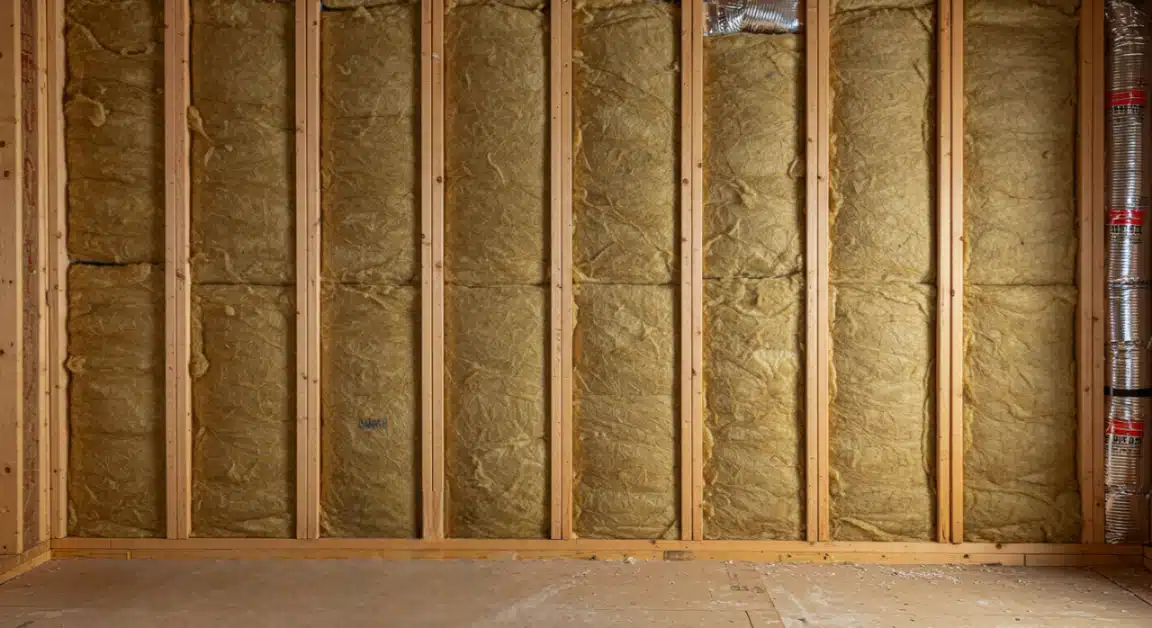If you’ve dealt with musty odors, inconsistent indoor humidity, or unexplained wall discoloration, you already know moisture isn’t just a nuisance it’s a threat to your home’s health. At Flatland Roofing & Insulation, we see it every week: homeowners in Texas battling the long-term effects of hidden moisture. Many of them never realize how much of that fight starts and ends in their walls and attic insulation.
Dense-pack cellulose insulation isn’t just about energy efficiency. It’s one of the most reliable, cost-effective ways to control moisture buildup inside your structure. We’ve installed it in countless homes and buildings, and the difference it makes is immediate and lasting.
In this guide, we’re breaking down exactly how dense-pack cellulose insulation helps with moisture control no fluff, no filler just real insights you can use to protect your home and make smarter insulation decisions. Let’s get into it.
Why Moisture Control Matters More Than You Think
Too much moisture in your walls or attic doesn’t just stay put. It migrates, spreads, and leads to real damage mold growth, rotting framing, warped drywall, rising energy bills, and even indoor air quality issues. Moisture control isn’t a luxury. It’s part of protecting your investment.
Dense-pack cellulose steps in where traditional insulation methods fall short. Its structure, performance, and application method create a barrier that’s not just energy-smart—but moisture-smart too.
Understanding Hygroscopic Insulation and Why It Works
Cellulose insulation isn’t water-repellent it’s water-managing. That’s a critical distinction. Dense-pack cellulose is hygroscopic, which means it can absorb and safely release moisture as conditions change. Instead of trapping water like a sponge, it regulates humidity by buffering small amounts of moisture and slowly releasing it before it becomes a problem.
In homes where seasonal humidity swings are common, this behavior can prevent the buildup of condensation inside wall cavities something fiberglass and foam often fail to address.
Dense-Pack Installation Means Fewer Gaps, Less Moisture Risk
Dense-pack cellulose is blown in under high pressure, filling every crack, void, and irregular surface inside a wall or attic space. The result? A tight fit that blocks air infiltration and reduces the flow of moist air into cooler surfaces where condensation would otherwise form.
We’ve seen it first-hand in retrofits: homes with old fiberglass insulation that allowed interior air to reach unconditioned areas. Moisture was condensing behind walls, feeding black mold and staining drywall. After replacing it with dense-pack cellulose, those problems disappeared.
Dense-Pack Cellulose Acts as a Moisture Buffer, Not a Moisture Trap
One of the biggest misconceptions about insulation and moisture is that thicker always means better. But that only works if the insulation allows drying.
Dense-pack cellulose has a unique ability to absorb excess humidity and redistribute it gradually without trapping it long-term. In fact, that breathable quality is exactly what prevents problems.
How Breathable Materials Improve Long-Term Drying
Buildings need to breathe, and insulation should support that not suffocate it. Dense-pack cellulose allows vapor to pass through at a slow, controlled rate, helping walls dry naturally when moisture does enter.
Compared to foam board or spray foam, which can create moisture bottlenecks and hidden pockets of condensation, dense-pack cellulose encourages drying over time. That reduces the risk of long-term damage.
Better Indoor Humidity Control Starts with the Walls
When your wall cavities are properly insulated with dense-pack cellulose, the entire interior envelope becomes more stable. You’re not just keeping heat inside you’re controlling how moisture moves through the structure. That translates to more consistent humidity indoors, fewer allergy triggers, and better comfort year-round.
Moisture Control in Attics: Why Dense-Pack Outperforms the Alternatives
Attics are one of the most overlooked sources of moisture intrusion, especially in homes with vented roofs and fluctuating temperatures.
With dense-pack cellulose insulation, we can create a tighter air seal around ceiling penetrations, framing, and eaves. That helps stop warm, humid air from entering the attic and condensing on cold surfaces.
Dense-Pack in Roof Slopes Reduces Ice Dams and Attic Condensation
We often install dense-pack cellulose into cathedral ceilings and roof slopes, especially in older homes or buildings with tricky rooflines. That high-density fill significantly cuts down on air leaks and helps stabilize attic temperatures.
By controlling the heat loss and moisture movement, you avoid ice dams in winter and sweating roof decks in summer. And because dense-pack conforms tightly to cavities, you get complete coverage even in tight or oddly shaped areas.
Protecting Ductwork and HVAC from Moisture Exposure
Many Texas homes run HVAC ducts through the attic. When those ducts are exposed to humid, unconditioned air, condensation forms wasting energy and introducing moisture into the system.
Dense-pack cellulose creates a more temperature- and humidity-stable attic environment, helping protect ductwork and improving HVAC performance. It’s a simple fix with a major return on comfort and efficiency.
What Makes Dense-Pack Cellulose the Safer Choice for Moisture Control
It’s not just about how cellulose performs it’s about what it’s made of and how it behaves over time.
Dense-pack cellulose is treated with borates, giving it natural resistance to mold, pests, and fire. That makes it inherently safer in high-humidity environments. The material won’t degrade when exposed to occasional moisture and actively resists mold growth.
Mold Resistance Built Into the Material
We’ve seen cellulose insulation installed 15 years ago that’s still mold-free, even in challenging attic conditions. That’s thanks to the borate treatment and its moisture-buffering ability.
Contrast that with fiberglass, which can harbor moisture between its fibers without any antimicrobial protection, or foam, which traps water behind impermeable barriers. Dense-pack cellulose simply manages moisture better.
Fewer Costly Repairs, More Long-Term Peace of Mind
Homes that use dense-pack cellulose insulation tend to have fewer long-term issues tied to moisture. That means less drywall repair, fewer mold remediation calls, and more stable energy costs.
For property owners, that adds up to real savings not just on utility bills, but on maintenance and peace of mind.
Your Path to a Drier, Safer Home Starts Here
Moisture issues don’t fix themselves, and ignoring them only makes repairs more expensive later. Dense-pack cellulose insulation gives you real control over how moisture moves through your home from the attic to the crawl space.
We’ve seen how it protects homes across Texas, and we install it because it works. If you’re ready to fix hidden moisture problems and build real resilience into your property, Flatland Roofing & Insulation is here to help.
Call us at (806) 606-6794 or email [email protected] to schedule an insulation assessment today.
Still Curious? Let’s Go Deeper with Flatland Roofing & Insulation
Can cellulose insulation prevent mold?
Yes—dense-pack cellulose is treated with borates that help resist mold growth. It also helps regulate moisture, reducing the chances that mold can grow in the first place.
Is cellulose insulation good for high-humidity areas?
It’s one of the best choices. Cellulose buffers moisture, absorbs and releases it gradually, and supports natural drying within walls.
Will cellulose insulation rot if it gets wet?
Not under typical conditions. If allowed to dry properly, it holds its form and doesn’t degrade. It’s designed to handle small amounts of moisture without issue.
Does cellulose insulation reduce condensation?
Yes. By filling gaps tightly and controlling airflow, dense-pack cellulose reduces the chance of warm, moist air hitting cold surfaces and forming condensation.
Can I use cellulose in existing walls?
Absolutely. We specialize in dense-pack retrofits for existing homes. We access the wall cavity and fill it completely without major demolition.
How does cellulose compare to fiberglass for moisture?
Fiberglass does little to regulate moisture. It can let humid air pass through and trap moisture between layers. Cellulose actively buffers humidity and dries more effectively.
Is dense-pack cellulose safe for attic insulation?
Yes, and we use it often. It helps regulate attic humidity, insulates better, and reduces risks of mold and condensation.
How long does cellulose insulation last?
Properly installed, it can last 20–30 years or more. Its mold resistance and moisture control help extend its performance life.
Will dense-pack insulation help with indoor air quality?
Yes. By reducing mold risks and improving humidity control, it can lead to cleaner indoor air and fewer allergy triggers.
How do I get started with cellulose insulation?
Just give us a call at (806) 606-6794 or email us at [email protected]. We’ll walk you through the best options for your home and budget.






